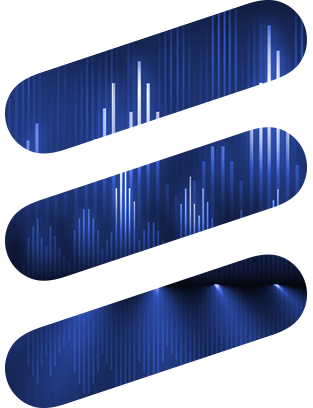About Radio Tech Day
Radio Tech Day is an annual Ericsson event focused on Radio Access Networks shaped by Polish R&D radio experts from Kraków and Łódź together with interesting innovations for operators showing how Ericsson brings mobile infrastructure closer to the market.

Agenda
Speakers
Jacek Oko, PhD
President of the Office of Electronic Communications
On 18 September, appointed by the Sejm of the Republic of Poland as President of the Office of Electronic Communications. Graduated and long-time researcher of the Wrocław University of Technology, as well as an experienced manager of the telecommunications industry.
For many years, he combined his didactic work with directorial positions in the Informatization Department of the Wrocław University of Technology and in the Wrocław Networking and Supercomputing Center. He also has extensive experience in business – he was the director of departments responsible for technology and data transmission in telecoms, including Telefonia Lokalna S.A. and Telefonia DIALOG S.A.
In his career, he managed m.in projects "Cybersecurity for the economy of the future", "Specialized Polish Scientific Infrastructure for Research Laboratories (SPIN-LAB)" and "Cloud Computing - new technologies in the didactic offer of the Wrocław University of Technology", he is the author of numerous scientific publications.
By education, he is a PhD electronics engineer specializing in telecommunications. He completed a course in project management at The George Washington University School of Business and Public Management.
Sibel Tombaz

Head of Product Line 5G RAN, Ericsson
Dr Sibel Tombaz is Head of Product Line 5G Radio Access Network at Ericsson, based in Stockholm, Sweden. She is responsible for the Profit and Loss (P&L) and life-cycle of Ericsson’s global 5G RAN product. She leads her team in bringing innovative software solutions needed to successfully develop and deploy best performing 5G networks to meet the needs of both enterprise and consumer markets. These technologies continue to transform every sector and create positive change benefiting not only customers but society in general. .
Tombaz joined Ericsson in 2014 and held positions in research and product management. She worked on 5G concept development, 5G use cases and energy performance of radio access networks. She also initiated and introduced award-winning Ericsson Spectrum Sharing innovation which allows operators to transition from 4G to 5G utilizing the same spectrum band. Tombaz holds a Ph.D. degree in communication systems from KTH Royal Institute of Technology in Stockholm.
Igor Tasevski
Vice President & Head of Integrated RAN Engineering Unit, Ericsson
Igor Tasevski is Vice President and Head of Integrated RAN Engineering Unit in Ericsson’s Business Area Networks. He is responsible for the development of Ericsson’s Radio Access Network portfolio and leads a large, global product development unit – delivering leading edge technology and products for the global wireless market. Tasevski has a strong technical background, with more than 15 years of experience in research and development. Prior to his current position, Tasevski was Head of Product Development Unit Radio in Ericsson, leading a design unit that pioneered the development and introduction of 5G Radio Hardware.
He started out in his career as a software developer in Ericsson Mobile Platforms, moving into leadership roles in 2010, predominantly within the areas of semiconductors, systems and hardware. Being an engineer at heart, Tasevski is very passionate about technology, especially the kind that impacts society in a positive way.
Tasevski holds a Master of Electrical Engineering from Lund University. His interests include reading, football and tennis. Connect with Igor Tasevski on LinkedIn at www.linkedin.com/in/igor-tasevski.

Demos
It has been 23 years since the introduction of 3G sparked a technology revolution by enabling the MBB. 3G is still in use, and we as Ericsson need to properly act on the further shape and existence of WCDMA networks. The challenge is the diversity of use cases. While some customers want to keep 3G and secure maintenance for EoS HW, others want to sunset legacy technologies as soon as possible. The presentation will show Ericsson's response to these challenges.
To enable use of load in traffic steering, load information must be shared between gNBs in the network. With Advanced Multi-Layer Coordination activated, the gNB will setup subscriptions over Xn towards neighbor gNBs to receive load information for cells that can be considered during traffic steering. Load information will be exchanged between gNBs using 3GPP procedures: Resource Status Reporting Initiation and Resource Status Reporting.
In parallel with the load sharing over Xn the load information for internal cells will be sent via F1 interface from DU to CU using 3GPP procedures: Resource Status Reporting Initiation and Resource Status Reporting.
Through the collective strength of a global workforce across 30 countries and responsible, sustainable operations, Flex delivers technology innovation, supply chain, and manufacturing solutions to various industries and end markets.
Since 2000, the campus in Tczew has been helping its customers design and build products that make life easier.
With deep expertise across the entire product life cycle, Flex Poland offers customers innovative and flexible solutions from design and development, through production, storage, and logistics.
The industrial park located in Pomeranian Voivodship consists of four buildings with a total area of 80,000 m2. In three of the buildings, the team carry out printed circuit board assembly, complete device assembly and high-level assembly on devices like mobile network nodes, packaging machines, car battery chargers, video cameras, etc. The fourth facility serves as a modern logistics center.
Flex representatives will present production technology for 4G and 5G Radio Telecom products which are produced for Ericsson Customer in Tczew Campus.
Thera are complex production processes including power amplifier modules, TX/RX boards, main boards and advanced assembly (wet-in-wet technology, Over-The-Air test chamber, microwave filters, antenna assembly).
Previous Events
See what we did in the past:


